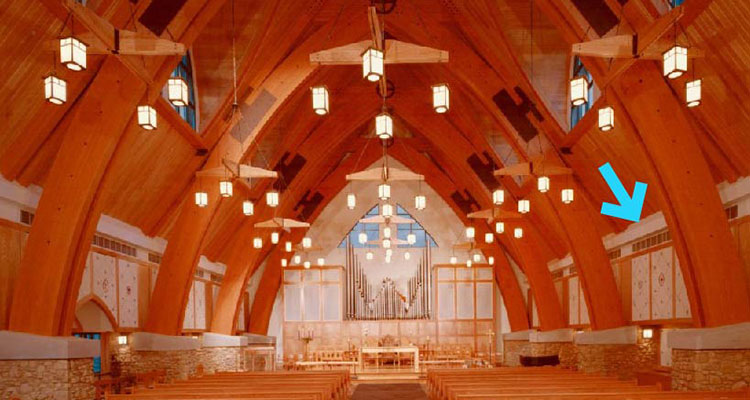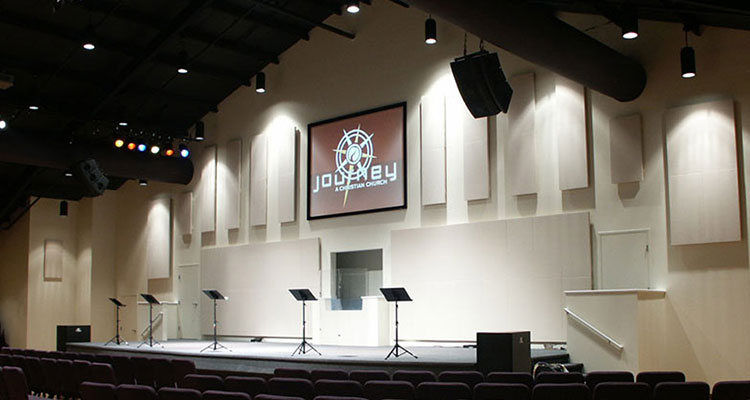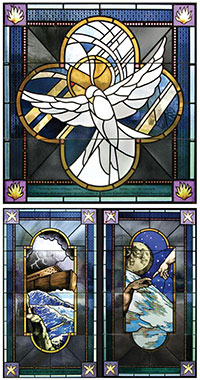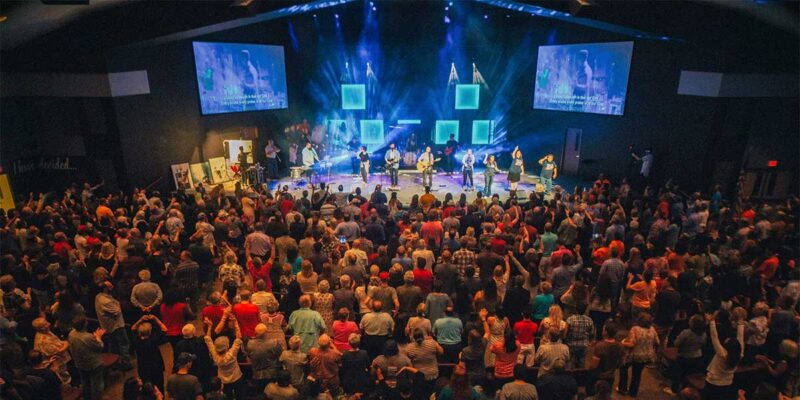Cleaner, Brighter and Articulate — It Is Possible, Part 1
A Little Physics
At the normal sea level atmospheric pressure of 14.7 pounds-per-square-inch, 59 degrees F, dry air (< 50 percent relative humidity), sound travels one mile every five seconds in round numbers — so in 2.5 seconds, sound will cover a distance of half a mile.
In NFL football, that’s just enough time to kick the winning field goal, in basketball it’s time for one or maybe two Hail Mary shots before the buzzer. A Mach 2 fighter jet will travel just over a mile, (the legendary SR71 Blackbird would travel 2.5 miles at its Mach 3 official speed). A 50 caliber bullet would travel 1.325 miles. (By official definition, Mach 1 is equal to the speed of sound or 1,116.5 feet per second — 340 meters per second, which is measured using the International Standard Atmosphere, parameters of dry air at mean sea level, standard temperature of 15 °C/59 °F.)
But 2.5 seconds is also an important number for another reason. It’s the suggested mid-point happy spot in reverberation time for an empty HOW space, balancing speech intelligibility with a time decay which works for organ, choir, and other musical sources, allowing them to bloom and blend appropriately. Many musicians and the choir master would like something closer to 3 seconds for optimal overall sound, especially if a pipe organ is involved (more on that later).
If music was the only source being considered going out to something closer to three to four seconds would make most performers feel acoustically happy and sonically satisfied, but try and put intelligible speech into that long a reverberation time and you will have problems.
Reality
So, the real question for any HOW space ultimately becomes: “How do you balance the needs of the spoken word, music, choir, pipe organ and congregational comfort?”
To get a better understanding of what actually happens with various amount of reverberation, and the effects of true echoes, go here.
 (Links to files below are courtesy of McSquared System Design Group of Vancouver, B.C. Canada.)
(Links to files below are courtesy of McSquared System Design Group of Vancouver, B.C. Canada.)
On that acoustical design firm’s site under audio examples you will find a series of audio files that you can freely download and listen to in multiple audio file formats. The examples are:
- Reverberation time and speech (“the room sounds kind of echoey”)
- Reverberation time and music (“the music sounds awful”)
- Late Reflections, or Slap Echoes (“it really does sound echoey”)
- Inadequate Loudspeaker Coverage (“it’s loud but I can’t understand anything”)
Each example demonstrates what you would hear with various amounts of reveberative decay, or echoes and will prove highly enlightening, especially when trying to understand what happens to speech when a room is optimized for non-speech sources. There is no signup, sales pitch involved and no logging of your email — it’s 100 percent free and clean.
Please spend a few minutes listening to the sound files — it will be well worth the time and give you a far better understating of the issues we are going to discuss next.
What Do You Have and What Do You Want?
There is a point in any HOW project, regardless of any other issues where the acoustics discussion splits into two distinct paths.
These paths are determined by one simple fact. Does the building already exist or are you starting from an empty plot of land?
What needs to be done, the discussions that need to take place, the various professionals and experts you need to involve will differ specifically based on your answer to that one single question.
This article will also split into two parts to avoid becoming too lengthy. This first part will discuss the issues, solutions and processes you should consider IF the building already exists. Part two next month will discuss new construction, or building from the ground up. Some issues occur in both scenarios and therefore will be discussed in both parts.
There Is an Existing Building
If your HOW space already physically exists, you need to determine a number of project-critical things at the outset. Based on the acoustical problem examples recommended above, and just your ears, how many of the listed difficulties exist in the space in question? Listen, then listen again, to the unoccupied space — what can you hear?
A simple way to check for echoes, for example, is to stand in the middle of the space and pop a good sized (at least 10”-12″ diameter) balloon — do you hear distinct time differentiated sounds returning to your ears? That same test can give you a ballpark generalized reverberation time using nothing more than a stopwatch or the old one-one thousand, two-one thousand, counting method. How long does it take until you no longer hear the sound from the balloon pop? Do this simple test at least twice to check and verify the results.
It would be best to have several people present (both male and female since they hear things differently) so that more than one set of ears is involved, and can provide a cross-check on the results. Obviously you want people with normal hearing, that is people who are not using any hearing aids and do not have known hearing issues.
If either of these issues is present, echoes or a reverberation time longer than four seconds, you will need at least advice from an acoustics expert, an acoustical materials supplier or — more than likely — both. You really cannot move onto any other issues until you determine the sources of these problems and decide on how and with what you are going to address them.
Better yet, now would be the proper time to invite an acoustician familiar with houses of worship (HOW) spaces who also understands the client’s worship style, goals and budget, into the process. It need not be enormously expensive, but if the right professional is chosen, it will be worth every penny down the road.
Talk with other HOWs in your area and within your faith group or denomination nationally to look for experts who understand your needs.
Remember, somebody else has without a doubt had the same issues and if that person successfully solved them, the professionals they worked with can probably help you as well or at least recommend somebody local to your HOW to help.
Asking Questions, Finding Answers
If any of the problems the audio problem sound files demonstrate exist in your space, the most important thing you can do is to build a decision tree on how to tackle the problem(s).
To do this you need to ask and answer the following questions:
1. What is your worship style and liturgical content?
By this we mean is your service primarily spoken word or a mix of pre-recorded music and spoken word, or does it contain any kind of live music content. Each of these styles will require a different acoustical end-result for the best results.
As a guideline only (actual numbers matter less than the perceived acoustical result heard by actual listeners):
- For speech only you want to target a reflection/echo free space with a reverberation time of around one to one and a half seconds.
- For speech and recording music closer to two seconds to allow the music to bloom a little.
- For live music of any type (except Pipe Organ — see below) you want to be around two to two and a half seconds to a max of three seconds.
But don’t forget you should be testing and measuring for the results in an unoccupied space for consistency. Once people (who are fine middle frequencies, i.e., the speech frequencies absorbers) are added, the actual measured time will drop by as much as a half-second, depending on congregational size, the interior furnishings and finishes used.
2. What is your budget for this part of the project and what kind of finished look will best serve the space and your worship style?
You need this answer because it will help guide you and any acoustical professionals, interior designers and architects involved to the right mix of materials, finish options and locations for acoustical treatments that best match your space and your desired outcome.
3. What limitations exist on what can be done to the space and where potential acoustical treatment and modification devices and materials can be located? What local fire, safety and environmental codes must be met, and how do you and your system integrators, contractors, DIY volunteers, etc., intend to install the chosen solutions?
For example — is your space a landmark building with specific limitations on what can be done to the interior? What can be used? Or, can your roof support a sub-structure (false ceiling) type design to allow absorptive materials to be safely placed above the congregants?
There are dozens of variations on these basic questions, and it is crucial to discuss and resolve the answers to any and all of them BEFORE doing anything.
Diffuse, Absorb, Modify
Once you are comfortable that you have both a good overview of your situation and sufficiently detailed data, it’s time to look at options and solutions. Every space will be different — it’s just the immutable laws of physics at work — but in general, there are three kinds of solutions available.
You can:
- Absorb energy to reduce reflections and echoes
- Absorb more energy to lower reverberation time (much harder to execute)
- Diffuse reflections and energy to smooth out decay times and counteract discrete echoes and bounces
Let’s look at five different HOW facilities and what they did to deal with these issues.

This space had serious cross-bounce problems along with the high vault and related reverberation time issues. The solution was to install and blend in a wide band of absorption (the blue arrow), which can been seen all along the walls above the air-conditioning vents (the light tan colored material). This corrected the problem and made the space work while not being visually intrusive.

In this contemporary style sanctuary building, there were substantial reflections from the hard ceiling and subsequent bounce off the floor. The use of visually neutral fabric covered panels on the ceiling helped to control this and make the space useable and permit articulate speech and a viable music environment.

At Journey Christian Church, a modern praise and worship style service, with live singers and music, was hampered by bad reflections from the stage and nearby walls. Again the use of absorptive panels controlled this problem and permitted the church to worship in the style they wanted.

At St. Ann’s, a neo-classically styled worship space was crippled by the acoustic energy bouncing off the hard walls and making both speech and music a mush of unintelligible sound. The strategic placement of absorption and some diffusive panels in the same shape and size dramatically improved the acoustics and created a stunning worship space with comfortable sound for every congregant.

One of the newest options for acoustic panels is the ability to ink-jet print stunning graphics directly onto the surfaces making the panels visually disappear. Almost any image can be used — however, this process takes time so the lead necessary to allow fabrication must be factored into any construction/installation schedule. There are a number of suppliers, so you should investigate what is available in your area.

Another new option in the market is micro-perforated wood or wood-look panels and diffusive surfaces. Again almost any desired style can be fabricated allowing sufficient time. This is a proprietary process and the example shown is courtesy of Acoustical Surfaces, Inc. There are other suppliers, so you should investigate what is available in your area.
The King of Instruments
And finally for this part of our series, consider the pipe organ. If your HOW has or is going to have a pipe organ, special consideration must be given to the acoustics and the building itself to accommodate these magnificent instruments.
The APOBA (Associated Pipe Organ Builders of America) provides a range of informational resources on pipe organs, their design, installation, and configuration as well as acoustical considerations. It is a highly recommended resource for any house of worship considering or refurbishing a pipe organ. In summary they point out the following information worthy of consideration:
A pipe organ can generate basic foundation frequencies ranging from 10 Hz to above 10 kHz not counting overtones or articulation gradation.
The very low bass frequencies possible with a pipe organ also generate a large amount of energy that requires surfaces of dense mass for good reflection. Thus surfaces such as polished smooth-finish stone or masonry walls provide a good substructure for the reflective surface for bass frequencies. Drywall or gypsum board can suffer the same problems of reflection unless applied directly to masonry walls or unless extra support is provided.
Treble frequencies are directional by nature and easily reflected by hard surfaces. Any surface with a hard smooth or polished finish will usually support good treble reflection.
When evaluating the room, the optimal space will have a smooth reverberation time across the spectrum of bass to treble frequencies. As music has a complex series of overtones, the sustained overtones assist in weaving the fabric of the music the listener hears.
The benefits of a good acoustical environment enhance the ability of the listener to hear the music equally in any place in the room. This also equates to a less forced sound for singers, instrumentalists and the pipe organ.
The support from a public address system can then focus on intelligibility of the spoken word more than volume amplification. An organ builder should be involved with the design of a new space when possible or should be provided complete information on an existing space when considering the design of a new pipe organ. Good acoustical architecture design will address structure and surfaces as different but inter-related components.
And finally, in part two of this series, we will look at the issues related to new construction and summarize the best approaches to various problems.





